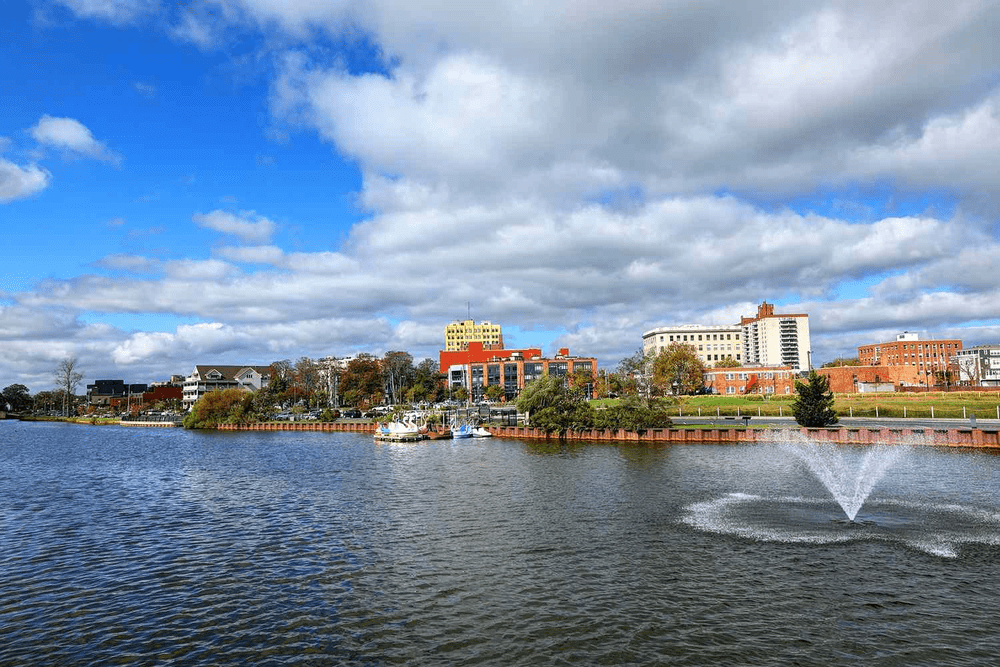Today, many troubled communities face a range of challenges that hinder their growth and well-being. However, by understanding and addressing these community problems, we can pave the way for positive change and transformation. To ensure the success of this transformation a collective involvement is needed. Instant Input facilitates community involvement by allowing each member of the local community to easily voice their concerns and opinions and actively participate in solving local issues.
This article aims to emphasize the importance of tackling community issues, the different types of issues they face, their causes, and the power of collective engagement in problem-solving. Additionally, we will explore key strategies for community turn-around, and learn how to apply past lessons to turn around current struggling communities.
Understanding Community Problems: The First Step Toward Improvement
Community problems refer to challenges or issues that affect a specific group of people living in a particular area. These problems can hinder the overall well-being and development of the community. They can arise from various factors such as social, economic, environmental, or political circumstances.
It is crucial to recognize and address these problems to foster a thriving and harmonious community where all people have the same opportunities and feel like their voices matter.
With Instant Input, making your voice heard is easier than ever, no matter your background. Our surveys are designed to get to the root cause of your complaints and help fix them.
Most Common Problems Local Communities Face
Crime and Safety issues
Troubled communities may experience high crime rates, violence, or a lack of safety measures. These problems can create fear and hinder community members from fully engaging in social activities or pursuing their goals. Domestic violence, child abuse, drug use, and other problems have a significant negative impact.
Lack of Educational Opportunities
Limited access to quality education, inadequate resources, or a lack of educational institutions can hinder the intellectual and personal growth of community members. This can perpetuate inequality and limit future opportunities. For example, the lack of after-school programs can significantly lower the intellectual development of children.
Economic and Employment issues
Communities facing economic challenges may struggle with high unemployment rates, limited job opportunities, or low wages. These issues can lead to financial instability, poverty, and a lack of supplies for community members. For example, low-income families with financial issues are prone to a variety of other problems that can further negatively impact the local collective, including child abuse and domestic violence.
Health and Well-being problems
Communities may face health-related problems such as limited access to healthcare services, inadequate nutrition, or high rates of chronic diseases. These challenges can impact the overall well-being and quality of life of community members.
Infrastructure and Housing issues
Insufficient infrastructure, lack of affordable housing, public transportation, or lack of basic amenities are leading problems that hinder community development and quality of life. These problems can affect access to essential services like clean water, sanitation, transportation, and recreational facilities.
Underlying Factors of Local Community Problems
In our quest to address the challenges faced by local communities, it becomes imperative to understand the underlying factors that contribute to these issues. This article aims to shed light on the intricate dynamics that shape and perpetuate local community problems. By examining the multifaceted aspects of social, economic, and environmental factors, we can gain a comprehensive understanding of the root causes that hinder progress and well-being.
Socioeconomic factors
Poverty, income inequality, and limited resources can contribute to various community problems. Unequal distribution of wealth and opportunities can perpetuate social disparities and hinder community development.
Governance issues
An ineffective state government, corruption, or lack of community participation in decision-making processes can lead to inadequate policies, misallocation of resources, and a lack of accountability. These factors can exacerbate community problems.
Historical contexts
Historical events, such as colonization, discrimination, or systemic oppression, can have long-lasting effects on communities. These factors can contribute to social, economic, and political challenges that persist over time.
How Do These Issues Affect the People?
The impact of problems on troubled communities is significant. They can lead to social unrest, increased crime rates, and a decline in community cohesion. These problems can also hinder economic growth, limit educational opportunities, and perpetuate cycles of poverty. Additionally, these community issues can negatively affect its members’ physical and mental health, leading to decreased well-being and quality of life.
Addressing community issues requires a comprehensive approach to taking direct action that involves collaboration between its members, other organizations, and government entities. By understanding the causes and impacts of these community problems, communities can work toward implementing effective solutions, fostering social justice, and creating a more inclusive and thriving environment for all community members.
The Power of Community Engagement in Solving Its Problems
Community engagement plays a vital role in addressing and solving local problems and providing sustainable community solutions for local problems. When individuals come together in their local area, share their perspectives, and actively participate in finding solutions, the collective power of the community is unleashed. By engaging the community, we tap into a diverse range of knowledge, experiences, and ideas, which can lead to innovative and effective problem-solving approaches.
Community engagement fosters a sense of ownership and responsibility. When people feel invested in their community’s well-being, they are more likely to actively contribute to finding solutions. This engagement also promotes a sense of unity and collaboration, as people work together towards a common goal.
If you wish to deepen your knowledge of how community engagement can help solve its issues read our comprehensive article about the top 10 community engagement strategies for community improvement and be inspired to take these actions in your community as well.
Are you ready to actively engage in finding solutions for your collective issues and make your voice heard?

Practical Applications of Community Engagement in Solving Problems
There are several methods through which community engagement can be fostered in problem-solving processes. These include:
- Town Hall Meetings: Organizing public forums where people can voice their concerns, share ideas, and collectively brainstorm solutions.
- Surveys and Feedback Mechanisms: Implementing surveys and feedback systems to gather input from members, ensuring their voices are heard and considered.
- Focus Groups: Creating small groups of local people with diverse backgrounds and perspectives to discuss specific community problems and generate innovative solutions. This can be done in person but also online to make it easier for people to participate.
- Collaborative Projects: Encouraging community members to actively participate in projects that address community problems, fostering a sense of ownership and collective responsibility. Certain projects can also help with economic development.
Best Strategies for Community Turn-around
In the dynamic landscape of community development, the concept of ‘Community Turn-around’ has emerged as a pivotal strategy. This approach focuses on revitalizing communities that have experienced economic, social, or environmental challenges, transforming them into thriving, sustainable environments. Some of the best strategies to solve community problems include:
Community Empowerment and Involvement
Empowering the people by providing them with the necessary tools, resources, and knowledge to actively participate in problem-solving processes. This includes promoting inclusivity, fostering leadership skills, and creating opportunities for them to contribute their expertise. However, for this strategy to prove effective people also need to get actively involved in their local government and take a proactive approach towards solving their collective issues.
Education and Skill Development
Investing in education and skill development programs that equip people with the knowledge and skills needed to address community problems effectively. This can include workshops, training sessions, and mentorship programs.
Effective Leadership and Governance
Promoting effective leadership and governance structures within the community to ensure transparency, accountability, and efficient decision-making. Strong leadership can inspire and mobilize people toward problem-solving efforts.
Resource Mobilization
Facilitating the mobilization of resources, both financial and non-financial, to support initiatives and projects. This can involve seeking partnerships with government agencies, NGOs, and private organizations.
Establishing Partnerships with External Stakeholders
Collaborating with external stakeholders, such as businesses, academic institutions, and non-profit organizations, to leverage their expertise, resources, and networks. These partnerships can bring fresh perspectives and additional support to problem-solving efforts.
How Can Instant Input Help Solve Community Problems?
Instant Input is committed to facilitating community engagement and problem-solving through our innovative platform. Our user-friendly interface allows members to easily share their ideas, concerns, and suggestions. By providing a digital space for open dialogue, Instant Input enables people to take direct action, actively participate in decision-making processes, and have a direct influence in solving their community’s problems.
Through surveys, feedback mechanisms, and collaborative projects, Instant Input empowers communities to collectively address their problems. Our platform ensures that every voice is heard and considered, fostering inclusivity and promoting a sense of ownership among its members.
If you noticed any problem in your local community voice your concerns today to help build a better collective future.
Case Studies: Successful Turnarounds of Troubled Communities
Case Study 1: The Transformation of Medellín, Colombia
In the late 20th century, Medellín, Colombia was infamous for its high crime rates, widespread poverty, and rampant drug trafficking. The city was in dire need of a turnaround. The strategies employed to achieve this included significant investment in education, comprehensive urban planning, and infrastructure development.
These initiatives were aimed at addressing the root causes of the community’s problems, such as social inequality and lack of opportunities. The impact was profound. Medellín had a complete recovery, with a drastic reduction in crime rates and a significant improvement in living standards. Today, it is often cited as a model for urban transformation, demonstrating the power of strategic investment and planning in community turn-around.

Case Study 2: The Revival of Asbury Park, New Jersey, USA
Asbury Park, New Jersey, once a bustling seaside resort, experienced economic decline, population loss, and deteriorating infrastructure in the latter part of the 20th century. The city’s turnaround strategy focused on leveraging its cultural heritage, with investment in arts and music, revival of the iconic boardwalk, and fostering public-private partnerships.
These efforts led to economic revitalization, population growth, and improved infrastructure. Asbury Park’s turnaround story underscores the potential of cultural investment and public-private collaboration in community revitalization.

Case Study 3: The Rebirth of Bilbao, Spain
Bilbao, Spain, was once a city in decline, filled with community problems, grappling with the industrial downturn, pollution, and high unemployment rates. The city’s turnaround strategy was centered on the arts, urban redevelopment, and tourism. The construction of the Guggenheim Museum, a world-class art institution, symbolized this shift. Alongside urban redevelopment projects and a focus on tourism, Bilbao experienced economic growth, improved quality of life, and reduced pollution levels.
Bilbao’s transformation illustrates how investment in the arts and urban redevelopment can serve as powerful catalysts for community turnaround.

Key Takeaways from the Case Studies that Help Solve Community Problems
The Transformation of Medellín, Colombia teaches us that addressing the root causes of a community’s problems along with strategic investment and urban planning hold the key to solving its problems.
Asbury Park’s revival story is a testament to the power of cultural and economic revitalization. The city’s commitment to inclusivity and diversity played a crucial role in solving the community problems it was facing, ensuring that the benefits of revitalization were equitably distributed among all residents.
Bilbao’s transformation from a declining industrial city to a global cultural hub is a classic example of successful urban regeneration. The city’s strategy to center on the ‘Bilbao Effect,’ using iconic architecture and cultural institutions like the Guggenheim Museum to stimulate economic growth and tourism, coupled with significant investments in infrastructure and environmental sustainability, has led to a dramatic improvement in Bilbao’s global standing and local living conditions.
How Do These Lessons Apply to Other Communities Facing Problems?
The case studies of Medellín, Asbury Park, and Bilbao provide valuable insights that can be applied to other communities and help solve their problems. Firstly, the importance of a holistic approach that addresses economic, social, and environmental aspects cannot be overstated. Secondly, community engagement is crucial for the success of any turnaround strategy. The residents must feel a sense of ownership and involvement in the transformation process.
Moreover, each community has unique strengths and challenges. Therefore, strategies should be tailored to leverage these strengths and address specific community challenges. For instance, Asbury Park capitalized on its musical heritage, while Bilbao used its industrial past to create a new identity as a cultural hub.
Lastly, patience and persistence are key. Community turn-around is a long-term process that requires sustained effort and commitment. But as these case studies show, the results can be truly transformative.
Finding the Strength to Overcome Community Problems Together
The possibility and importance of community turn-around are not only real but also crucial in today’s world. The strategies discussed throughout this piece underscore the transformative potential that lies within every community, regardless of the challenges they face. This turn-around process is not merely about overcoming adversity; it’s about harnessing the inherent strengths of a community to create a sustainable, prosperous future.
For communities currently grappling with various challenges, it’s essential to remember that change is not only possible but within reach. The journey toward turn-around may seem daunting, but every step taken towards improvement is a step towards a brighter future. It’s an invitation to reimagine, rebuild, and revitalize your community in ways that reflect the shared values and aspirations of its members.
In conclusion, the power of collective action and community engagement in problem-solving cannot be overstated. When individuals come together with a shared vision, they can effect change on a scale that far surpasses what any one person could achieve alone. The turn-around process is a testament to this power. It’s a journey that calls for collaboration, resilience, and a shared commitment to creating a better future. As we move forward, let us remember that our collective action can transform the places we call home into thriving, sustainable communities for generations to come. So never hesitate to take action and voice your concerns and ideas for a better collective future.

FAQs
Local issues refer to challenges, concerns, or problems that are specific to a particular community or locality. These issues can vary widely and encompass a range of areas such as social, economic, environmental, and political aspects.
How do you address social issues in your community?
Creating a positive impact in your community starts with addressing social issues head-on. By recognizing the challenges that exist and actively engaging in solutions, we can foster a more inclusive and equitable society. By actively listening and involving diverse voices, we can gain valuable insights and develop targeted strategies.
What are the most common problems in community engagement?
From lack of representation and participation to communication barriers and power imbalances, these issues can hinder effective engagement and limit the potential for meaningful community involvement. By recognizing and addressing these challenges, we can strive towards more inclusive and impactful community engagement practices that empower individuals and foster stronger, more resilient communities.